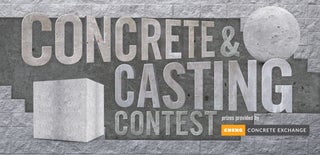Introduction: Concrete Base to Hold Things in Place + Mistakes and Lessons Learned
Concrete base can be used for different things such as to hold in spot lights, Pumps, lights and things that required a base to stand in place. I had to make concrete lights mainly for my lights and submersible pump as they would not hold the position that they should have been into, the submersible pump without the base would just move around with the action of the pump and would detach from the hose.
For this project the parts list is as follows:
- Concrete (concrete, water, rock sand, gravel and other materials to help in its preparation)
- Mould (I had wood pieces laying around thus I just took it and used is as the mould)
- Plastic or newspapers to prevent the concrete from sticking to any existing hard surfaces.
- Materials required to stick to the slab (in my case light, water pump, screw and Rawl plug, Rebar)
Step 1: Preparing the Mould, Rebar and Concrete.
Because I had concrete leftover from previous work, I needed to use it ASAP else it would have expired (which did as you will see later on) so the first thing to do was to know the size of the slabs that would be needed for its purpose and mine was for small things thus only needed a slab of dimensions length of 14cm, thickness 3 cm and width 14 cm.
Since I had used planting bags which were out of their life, I just cut them and open so that they could cover a larger area and I would put several together to be able to have the whole mould onto. Then I cut my leftover wood parts and measure them where a long piece of 45 cm would be laid horizontally and then vertically I put pieces of 14 cm of wood where 4 of these would be inserted in between and in the ends to make the mould where the concrete will be poured in.
The next thing that I did was to make a skeleton with rebar that would hold the concrete together and make it withstand higher pressure. Note: for such a small slab it was unnecessary to incorporate but I did as well because I had many pieces of rebar laying around. Now it is time to mix the concrete, pour into the mould, fill about half of the mould, add the rebar and continue to fill with concrete until the concrete has topped the desired height. From the picture you will notice that the texture is wrong. why is it so? simply because the concrete was expired, the mixing wasn't done as it should, not enough water and rock sand was added into the mix and finally there was too much gravel.
After the concrete cured which took along time because it was in winter and there was rain frequently, it did not have the polish look that I needed and thus I prepared a mixture of Rock sand and concrete to try to cover the layer and let it sit for another 4 days.
Step 2: Putting the Slabs to Use.
After that It was finally time to put the slabs to use where I choose to add my lights and pumps to them. First I choose the pump and mark on the slab where to drill the holes and then to insert the rawlplugs. After drilling the holes SURPRISE!!!!! the slab just cracked into half revealing the rebar and at this point I realised how bad I made the mixture and that they won't even resist the pressure. Because these would be used for testing purposes and personal use where I went ahead and continue to mark other slabs and drill into them and none of them broke that bad but they still broke on edges as seen in the pictures "sorry for blurry pictures" but they were well affixed and could carry the load.
After the holes were drilled, the rawl plugs were cut in half due to their long size to be able to fit in as well as to save on. Because these will be added in water and will stay outside I needed screws that won't corrode over time and the one that I had did not have a large head to be able to be affixed to the slab. So what I did was that I measured the hole of the light stand and then with some leftover plexiglass I chopped off sizes that were large enough to be able to hold the lights. Then with the help of my drill I made holes in the plexiglass where I could easily screw into it and to the rawlplug into the slab.

Participated in the
Concrete and Casting Contest













